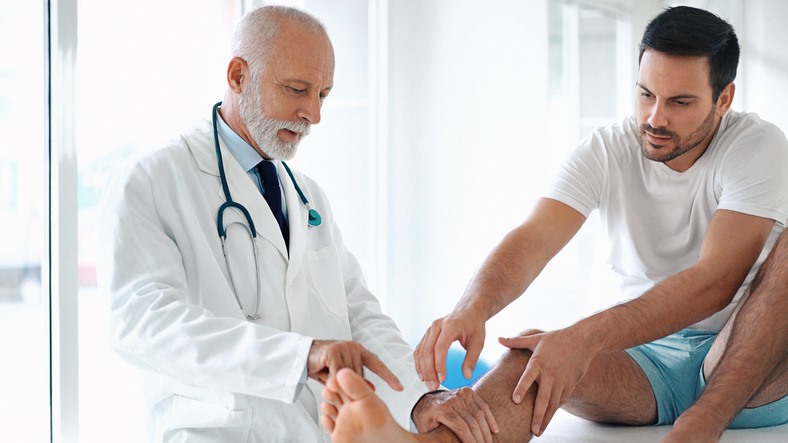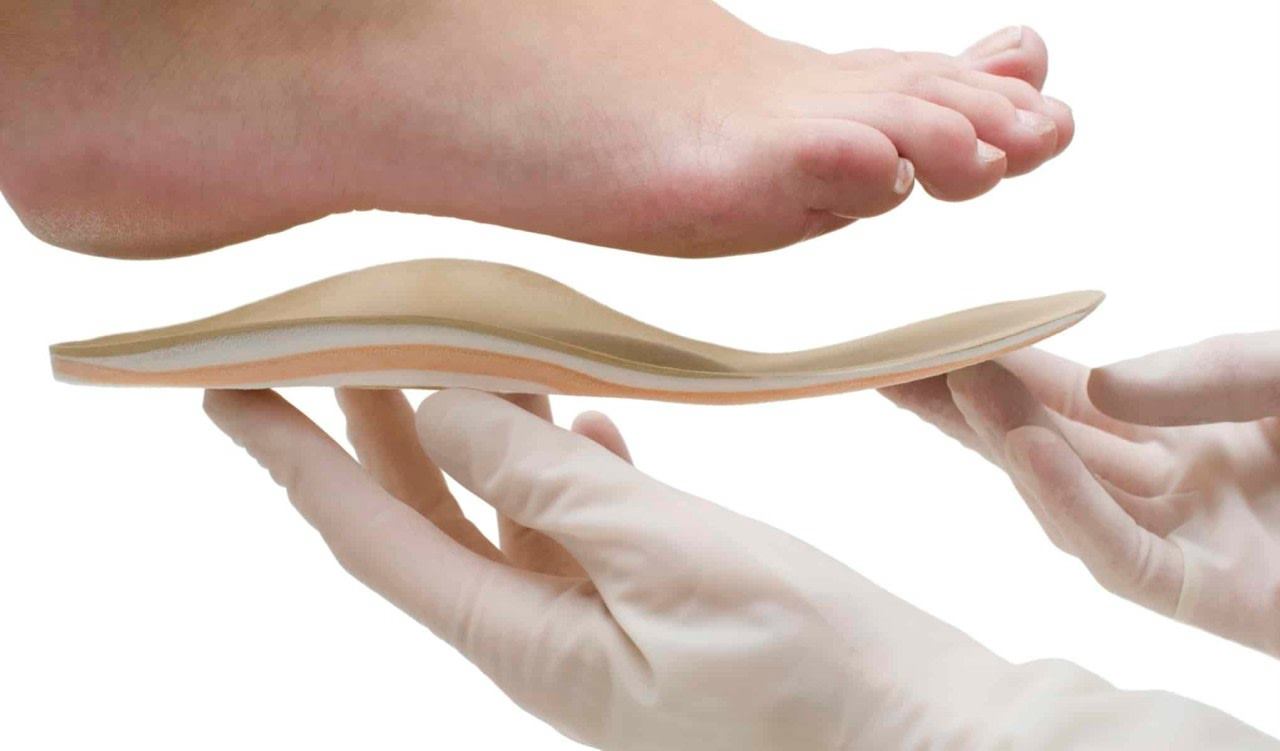The Impact of Footwear on Bunions: Choosing Shoes to Alleviate Pain
The impact of footwear on Bunions, those bony bumps that form at the base of the big toe, is not just a cosmetic concern but a source of significant discomfort for many. The wrong footwear can turn every step into a painful reminder of this common foot problem. Yet, navigating the plethora of shoe options to find ones that won’t exacerbate your bunion pain feels like a daunting task. In this blog, we’ll explore the intricate relationship between footwear and bunions. We’ll guide you through understanding how certain shoes can either contribute to the discomfort or play a pivotal role in alleviating it. Whether you’re an avid runner, a fashion enthusiast, or someone who spends long hours on your feet, join us as we uncover the secrets to choosing the best shoes for your bunions, ensuring that every step you take is one closer to comfort and pain relief.
Understanding Bunions
Bunions, medically known as Hallux Valgus, arise from a misalignment of the first metatarsal bone and the big toe, leading to the formation of a prominent bony bump on the side of the foot. This condition can result from a variety of factors, including genetic predisposition, improper footwear, and certain foot activities that place excessive pressure on the toes. Symptoms often include pain, redness, and a noticeable deviation of the big toe towards the other toes. Understanding the root causes and identifying early symptoms of bunions is crucial for effective management and treatment. By recognizing these signs, individuals can take proactive steps to mitigate pain and prevent further progression of the condition.

Understanding Bunions
Types of Bunions
Bunions come in different forms, each affecting the foot in unique ways and requiring specific approaches for management and treatment. The most common types of bunions are:
- Primary Bunions: These are the classic bunions that develop at the base of the big toe, causing it to lean towards the second toe. Primary bunions often result from a combination of genetic factors and lifestyle choices, such as wearing tight, narrow shoes or high heels.
- Adolescent Bunions: Unlike primary bunions that typically appear in adulthood, adolescent bunions occur in teenagers and children, suggesting a strong genetic component. These bunions form at the base of the big toe, similar to primary bunions, but often with a quicker progression rate.
- Tailor’s Bunions (Bunionettes): This type develops on the outside base of the little toe, named after tailors who used to sit cross-legged, applying pressure to the outside of their feet. Tailor’s bunions can be particularly aggravated by shoes that are tight around the toes.
Understanding the specific type of bunion you have is crucial in selecting appropriate footwear and treatment strategies to alleviate pain and prevent further deformity.
Understanding the Impact of Footwear on Bunions
Before diving into shoe options, it’s essential to understand why and how footwear can affect bunions. The primary cause of bunions is genetics, as most people with bunions have a family history of the condition. However, certain lifestyle factors can exacerbate the problem, including wearing tight or ill-fitting shoes.
When it comes to footwear, there are two main ways in which they can impact bunions. First, wearing shoes that are too narrow or have a pointed toe box can squeeze the toes together and put pressure on the bunion, causing irritation and inflammation. Second, high heels or shoes without proper arch support can alter your natural gait and put undue stress on the feet, aggravating existing bunions.
Choosing the Right Shoes for Bunions
When shopping for shoes to alleviate bunion pain, there are a few key features to look out for:
- Wide toe box: Look for shoes with a wide and deep toe box that allows your toes to spread naturally. This will help reduce pressure on the bunion.
- Low heel or flat shoes: High heels put pressure on the ball of the foot and can cause the big toe to push against the other toes, worsening bunion pain. Opt for low-heeled or flat shoes with a wide sole for better weight distribution.
- Supportive arch: Shoes with proper arch support help distribute body weight evenly and reduce stress on the feet. This is especially important for those with bunions, as it can help correct the altered foot mechanics caused by the condition.
- Adjustable closures: Shoes with adjustable closures such as laces, straps, or buckles allow for a customized fit and make it easier to accommodate swelling or sensitive areas around the bunion.

Bunions Treatment
Types of Footwear to Consider
Now that we know what features to look for, let’s explore some specific types of footwear that are beneficial for bunions:
- Orthopedic shoes: These are specially designed to provide support and comfort for those with foot conditions, including bunions. They often feature a wide toe box, low heel, and arch support.
- Athletic shoes: Running or walking shoes with cushioned soles, good arch support, and a roomy toe box can help alleviate bunion pain and provide comfort during physical activities.
- Sandals: When it comes to sandals, look for ones with good arch support and an adjustable strap over the bunion area. Avoid flip flops or slides that don’t offer any support or protection for the feet.
- Custom orthotics: In addition to appropriate shoes, custom orthotics prescribed by a podiatrist can be beneficial for those with bunions. These are specialized inserts that provide support and help correct foot mechanics.
Key Features to Look for in Shoes to Alleviate Bunion Pain
Selecting the ideal pair of shoes can significantly influence the level of comfort for individuals with bunions. Here are some critical features to consider during your next shoe purchase:
- Soft Material: Shoes made from soft, flexible materials such as leather or canvas can better accommodate the shape of your foot and reduce pressure on sensitive areas.
- Removable Insoles: Footwear that features removable insoles offer the flexibility to insert custom orthotics specifically designed to address your foot’s needs and relieve bunion pain.
- Stability: Look for shoes that provide a good balance of support and cushioning. Stability in a shoe can help prevent excessive foot movement, which might aggravate bunion pain.
- Breathability: Shoes with breathable fabric are essential to prevent moisture buildup. This can be particularly important for those with bunions to avoid additional skin irritation and discomfort.
- Wide Sole: A wide sole helps distribute body weight more evenly across the foot, reducing pressure on the bunion and offering a stable base that supports natural foot movement.
By paying close attention to these features, you can make more informed choices that contribute to your foot health and minimize bunion discomfort.
Consulting a Healthcare Professional: Key to Selecting Bunion-Friendly Footwear
The right shoes play a crucial role in easing bunion discomfort and preventing additional issues, but it’s just as critical to seek tailored advice and treatments from a healthcare professional, like a podiatrist. A detailed examination by a foot healthcare provider can pinpoint specific aspects of your foot’s structure, how you walk, and the bunion’s severity. This in-depth analysis aids in determining the most appropriate shoe type for your situation. They might also suggest certain brands, designs, or even custom-made orthotics to better suit your needs. Additionally, a podiatrist can keep an eye on how your bunion changes over time and adjust your shoe recommendations or offer alternative treatments accordingly. With this individualized strategy, you not only enjoy greater comfort but also actively contribute to the effective management of your bunion condition.

Custom Footwear
Finding the Right Help in Choosing Footwear for Bunions
Selecting the perfect footwear when dealing with bunions is not a straightforward task. It often requires professional guidance to ensure that the shoes you wear help rather than harm. Podiatrists, orthopedic specialists, and certified pedorthists are key professionals who can offer invaluable assistance. Podiatrists specialize in foot and ankle health, providing insights into the types of shoes that can alleviate pain while addressing the structural issues causing your bunion. Orthopedic specialists have a broader focus on musculoskeletal issues and can provide advice on how to maintain overall joint health, including that of your feet. Meanwhile, certified pedorthists are experts in footwear and orthotic devices, skilled in modifying footwear and employing supportive devices to ease foot pain. Consulting with these professionals can lead to personalized recommendations, ensuring your footwear supports your foot health and comfort.
In conclusion, navigating the challenges of finding suitable footwear for bunions does not have to be a solitary or daunting task. By understanding the critical features to look for in shoes—such as soft material, removable insoles, stability, breathability, and a wide sole—you can significantly enhance your comfort levels and manage bunion pain more effectively. More importantly, the guidance and expertise of healthcare professionals like podiatrists, orthopedic specialists, and certified pedorthists can provide you with personalized advice and solutions, ensuring that your footwear choices support your foot health and comfort. Remember, the right shoes not only alleviate discomfort but also empower you to move freely and confidently, making every step a stride toward better foot health.
Flagstaff Foot Doctors: Anthony Rosales DPM
https://www.google.com/maps?cid=8835841318590452161
421 N Humphreys St, Flagstaff, AZ 86001, United States
(928) 774-4825
https://flagstafffootandankle.com/
